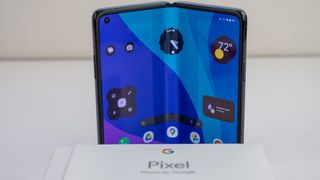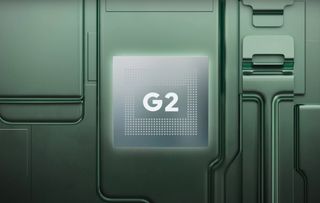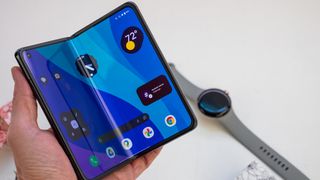Google has a Pixel Fold problem
We're hopeful the Google foldable phone will arrive soon...but maybe Google should delay it one more time.

I've been tracking Pixel Fold leaks since before Google first "delayed" the long-rumored foldable in late 2021, watching as leakers called it a Galaxy Z Fold 3 clone, then a Z Fold 4 twin, and now an Oppo Find N lookalike.
At the moment, leaked evidence points to a thick, squarish foldable with Google's signature Pixel camera bar and Tensor hardware. In theory, it's a recipe for success.
Generally speaking, we're big Pixel fans on the Android Central team. I really like my Pixel 6 and am pretty jealous of my Pixel 7 Pro-owning colleagues. The idea of getting Google's foldable take is an appealing one.
"So what's the problem?" you might ask.
In truth, when you take a complete look at the Pixel Fold's production process, hardware, and price, I'd argue there's reason to be concerned. And I'm starting to wonder if we should hope for yet another Pixel Fold delay, to make 100% sure it's ready to go.
What we "know" about the Pixel Fold

You can read our full Pixel Fold rumor guide for a more in-depth breakdown of every leak. But stick around here and I'll break down the core (unconfirmed) details you should know:
- The Pixel Fold will either launch this spring around Google I/O 2023 or this fall alongside the Pixel 8.
- Depending on the release date, it'll either use last year's Tensor G2 or this fall's Tensor G3.
- Old rumors suggested a $1,400 price, but the most recent leak claimed $1,800, the same as the Galaxy Z Fold 4.
- It'll pack 50MP main, 12MP UW, and 10MP telephoto lenses, housed in Google's trademark camera bar, plus an 8MP "ultra-micro-hole" selfie camera.
- Its 7.6-inch display will have a rich 1840 × 2208 resolution and (likely) 120Hz refresh rate, as well as noticeable top and bottom bezels.
- While Samsung will manufacture the display, it'll be wider and more square shaped than the Z Fold 4 — closer in size to the OPPO Find N — and even weigh more than the 263g Fold 4.
All of this could change if Google decides not to release the Pixel Fold this year. It may not even call it the Pixel Fold; Pixel Notepad is another rumored name we've heard. But we'll operate under the assumption that Google really plans to release it this year in its current leaked form.
Be an expert in 5 minutes
Get the latest news from Android Central, your trusted companion in the world of Android
Should it?
Samsung might let Google down

Earlier this month, complaints surrounding 2021's Galaxy Z Fold 3 came to a head. This Digital Trends piece outlines the many, many instances of the popular foldable phone's display breaking well before its 200,000-fold estimate. Cracks and dark blots appear along the crease, slowly expanding until the phone needs an expensive repair to continue working.
Samsung strengthened the glass on the Z Fold 4, and we have absolutely no evidence that the Pixel Fold display will have any manufacturer's failings. But the Z Fold 3 took less than two years before showing its metaphorical (and literal) cracks. Foldable fans may hesitate to buy another Samsung-made creased display as a result.
Samsung will allegedly make the Z Fold 5 creaseless with a waterdrop hinge — and has even developed a display that folds both inwards and outwards — while the Pixel Fold's inward-folding display shows a crease in the leaked renders we've seen.
Google itself doesn't have the best production track record. Our Pixel 6 Pro reviewer noted "slight gaps where the glass back meets the camera bar" and "slight raised edges" between the camera bar and metal edges. More recently, the volume rocker fell off a lot of Pixel 7 Pro units, including two AC team members' Pixels.
Add in 9to5Google's latest rumor that the Pixel Fold will weigh more than the Z Fold 4 to pack in a larger battery, and it's fair to side-eye the Pixel Fold design as a potential weak point to its success.
Tensor might let us down

Then you have Google Tensor G2, the Samsung LSI-produced chip. When the Pixel 7 Pro launched last year, we noted that it didn't provide much of a performance gain over the 6 Pro. This didn't strictly matter, because the AI boost for its cameras gave us new features like Photo Unblur, and it still performed admirably for day-to-day tasks. Compared to the overheating Snapdragon 8 Gen 1, it wasn't a bad alternative at all.
The Snapdragon 8 Gen 2 has changed the conversation. It's significantly faster for both daily tasks and gaming than any Android chip that has come before it, giving phones like the Galaxy S23 and S23 Ultra a truly massive benchmarking boost.
Comparing Future Labs benchmarks for the S23 Ultra and Pixel 7 Pro, the former crushes the latter with the same amount of RAM:
| Benchmark | Google Pixel 7 Pro | Samsung Galaxy S23 Ultra |
|---|---|---|
| Geekbench 5 Single-Core | 1060 | 1578 |
| Geekbench 5 Multi-Core | 3046 | 5081 |
| Crossmark (Overall) | 894 | 1322 |
| 3DMark Wild Life Original Unlimited | 6725 | 14611 |
| 3DMark Wild Life Extreme Unlimited | 1805 | 3788 |
For the Pixel 7 Pro vs. S23 Ultra, this feels like a fair fight because the Pixel 7 Pro costs $300 less and has some perks like better action photography and faster updates to lend it credibility. And its performance certainly isn't bad.
The problem is that the Pixel Fold will either cost $1,400 or $1,800, if the rumors are to be believed. And at that price, anything less than cutting-edge performance will turn away the hardcore Android users willing to spend that much. It takes away Google's typical affordable advantage because foldable components are just that expensive.
If the Pixel Fold arrives this spring alongside the Pixel 7a, it's nearly 100% guaranteed to use the Tensor G2, with all the drawbacks that entail. If Google does delay it to the fall, it'll use Tensor G3, which WinFuture claims is based off of Samsung's in-house Exynos 2300 processor. That leak only referenced two Pixel phones, however — likely the Pixel 8 and 8 Pro.
With Samsung abandoning Exynos for its own Galaxy phones, Google relying on an Exynos-spinoff design for the Tensor G3 feels riskier. It shouldn't be as big of a concern for the affordable Pixel 8, but the Pixel Fold and even the 8 Pro could fall behind other 2023 Android flagships in performance, enough that consumers take note.
No doubt the Pixel Fold will have impressive AI power. But people don't typically buy foldables for cameras and intangibles. And the fact that the Pixel Fold allegedly bulked up to fit in a big battery tells us that it likely won't be as efficient as this year's Galaxy Z Fold 5, which will use the Snapdragon 8 Gen 2 or Gen 2+.
Did Google miss its window, or should it wait even longer?

Google spent years delaying the Pixel Watch, waiting for the right moment. It did eventually prove to be an excellent wearable with a stylish design that we love; but it also had to stick with a years-old Exynos chipset to preserve that design, then pack in extra RAM to compensate.
With the Pixel Fold, it's not so easy to overcome the problems of its older design, as Samsung and other brands continue to iterate and search for the ideal foldable form.
If Google delays the Pixel Fold release date for a faster Tensor G3 chip, that could make the design look more dated; but if it rushes it out ahead of the Z Fold 5, Android enthusiasts might balk at the price-to-performance ratio.
Basically, by delaying past its original planned release dates of 2021 and 2022, Google has found itself in a bit of a pickle with its Pixel Fold. I'm not sure whether further delays or rushing it out is the solution, but it'll all depend on whether the Tensor G3 can close the gap — or if Android users will buy the Fold with a Tensor G2 chip.

Michael is Android Central's resident expert on fitness tech and wearables, with an enthusiast's love of VR tech on the side. After years freelancing for Techradar, Wareable, Windows Central, Digital Trends, and other sites on a variety of tech topics, AC has given him the chance to really dive into the topics he's passionate about. He's also a semi-reformed Apple-to-Android user who loves D&D, Star Wars, and Lord of the Rings.
For wearables, Michael has tested dozens of smartwatches from Garmin, Fitbit, Samsung, Apple, COROS, Polar, Amazfit, and other brands, and will always focus on recommending the best product over the best brand. He's also completed marathons like NYC, SF, Marine Corps, Big Sur, and California International — though he's still trying to break that 4-hour barrier.
